June 3, 2025 | 09:38 GMT +7
June 3, 2025 | 09:38 GMT +7
Hotline: 0913.378.918
June 3, 2025 | 09:38 GMT +7
Hotline: 0913.378.918
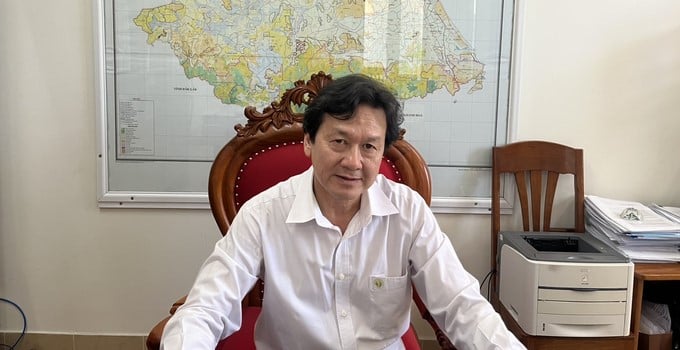
According to Mr. Nguyen Trong Tung, due to the small area of production land, it is very difficult for Phu Yen to apply mechanization. Photo: Kim So.
Reporters from the Vietnam Agriculture Newspaper had an interview with Mr. Nguyen Trong Tung, Director of the Phu Yen Department of Agriculture and Rural Development, around this issue.
Phu Yen is known as the granary of the Central Region, which has a large plain area with fertile soil and a distinct 2-season climate. This province has a dense system of rivers and streams and relatively abundant water resources, so it is convenient for the development of the agriculture sector in general and the rice production industry in particular.
According to the Phu Yen Department of Agriculture and Rural Development, the province currently has many irrigation structures, such as the Dong Cam irrigation system, the Tam Giang irrigation system, 51 reservoirs, 1,156 km of canals, and many pumping stations and water-raising dams of all types. Basically, the structures provide enough water for the production of short-term crops, for which sufficient water supply is ensured to produce about 55,000 ha of rice/year.
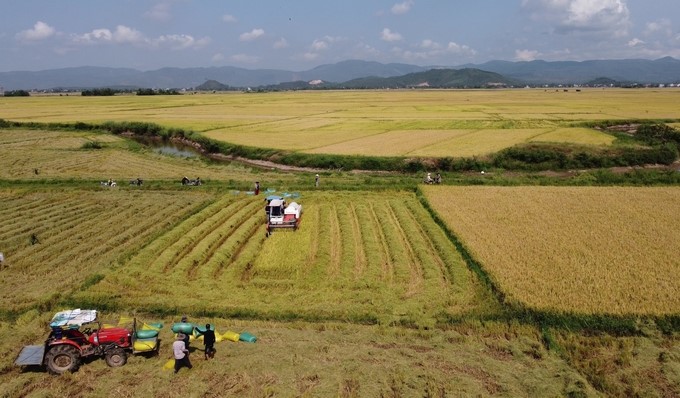
Phu Yen has flat fields that are very convenient for rice production. Photo: Kim So.
Phu Yen has two main rice production seasons: winter-spring and summer-autumn, with relatively flat terrain. Rice production is concentrated mainly in districts and towns such as Tay Hoa, Phu Hoa, Dong Hoa, and Tuy An, which is a favorable condition for building a concentrated raw material area on a large scale. Some specialty rice varieties are still stored and produced locally, such as red rice varieties (Tau Cuc, Bat Quat, and Duoi Nai), bringing distinction and high added value.
Phu Yen is also one of the provinces with the highest average annual rice yield in the South Central Coast, an average of 70 quintals/ha, contributing to stabilizing the province's food security and the ability to build a concentrated and stable raw material area for processing rice products when large enterprises participate in investing and building a rice value linkage chain in the province.
Dear sir, besides the potential and achievements, what are the shortcomings and limitations of rice production in Phu Yen?
It is a small and fragmented area of production land, averaging about 500 m2/parcel/household, so it is very difficult for us to apply mechanization as well as mobilize farmers to participate in the application of technological progress and production chains. Therefore, the quality of the province's rice has not yet met the demand of the current consumption market; production mainly serves the goal of ensuring food security in the locality and has not paid attention to markets outside the province or export.
On the other hand, mechanization in rice production in the province is not uniform, with low rates in stages such as sowing, spraying, fertilizing, drying, etc. The investment in manual labor leads to an increase in production costs, an increase in post-harvest loss, and a decrease in competitiveness for the province's rice products.

Currently, rice production in Phu Yen still has a lot of limitations, and the production of high-quality varieties is also limited. Photo: Mai Phuong.
In the province’s rice variety structure, high-yielding rice varieties account for a high proportion (79%). However, the people have not paid attention to producing high-quality and specialty varieties to serve the needs of consumption inside and outside the province.
Furthermore, although the rate of sowing standard rice seeds in localities has improved, a portion of farmers still use commercial rice for sowing, leading to a decrease in the quality of rice. Farmers still sow seeds with a fairly thick volume of about 120–150 kg/ha, leading to a high increase in investment costs for inputs such as seeds, fertilizers, pesticides, etc.
Especially in Phu Yen province, there are no large enterprises participating in the rice consumption linkage chain. The existing linkage chains are mainly on a small scale and lack sustainability. Agricultural cooperatives in the province have not really played the role of a focal point between organizations, enterprises, and people.
The construction of a rice brand in the province has attracted interest and investment, but it has not developed strongly and has not attracted potential businesses to invest in building the province's rice brand.
Faced with the above difficulties and shortcomings, it can be seen that the rice production of Phu Yen province has not developed commensurate with its existing potential. So, to solve these shortcomings and limitations, what solutions has Phu Yen province been implementing, especially to reduce investment costs, sir?
Currently, we are promoting and accelerating land readjustments to increase the scale of production/household. Along with that, focus on directing and promoting solutions to reduce rice production costs, such as applying synchronously technical measures of intensive farming in rice production such as IPM, ICM, "3 decrease, 3 increase"; increasing the rate of certified rice use; reducing the sowing density; applying fertilizers in a balanced manner; increasing the use of organic fertilizers; and promoting the application of mechanization in production, especially the application of unmanned aerial vehicles (drones) in the stages of sowing, fertilizing, spraying pesticides, etc. Invest in upgrading and completing the infrastructure for rice production.

Phu Yen farmers produce rice with high input costs, so profits are low. Photo: Mai Phuong.
The province is also implementing policies such as encouraging enterprises to invest in agriculture and rural areas; encouraging the development of cooperation and linkage in production associated with the consumption of agro-products; and building large fields according to Decree No. 98 of the Government and Resolution No. 10/2020/NQ-HDND dated July 10, 2020 of the Provincial People's Council to expand the scale of rice production by promoting land accumulation.
In addition, we are also reviewing and accelerating the restructuring of crops on inefficient rice land according to Resolution No. 01/2023 dated April 21, 2023, of the Provincial People's Council. As well as consolidating and improving the production capacity of standard rice seeds at the Agricultural Seed Center and agricultural cooperatives in the province in order to provide sufficient sources of quality rice seeds in order to build a brand of Phu Yen rice.
Especially in July 2022, Phu Yen province and Trung An Hi-tech Farming JSC, Can Tho City, signed a memorandum of understanding (MOU) on investing in high-quality, organic rice fields for export.
As you said, the province and the enterprise have a memorandum of understanding on investing in high-quality, organic rice fields for export. So, how is the implementation progressing now, sir?
On the basis of the MOU’s contents, the Provincial People's Committee issued Plan No. 169 dated September 19, 2022, in which specific tasks were assigned to departments and branches to implement.
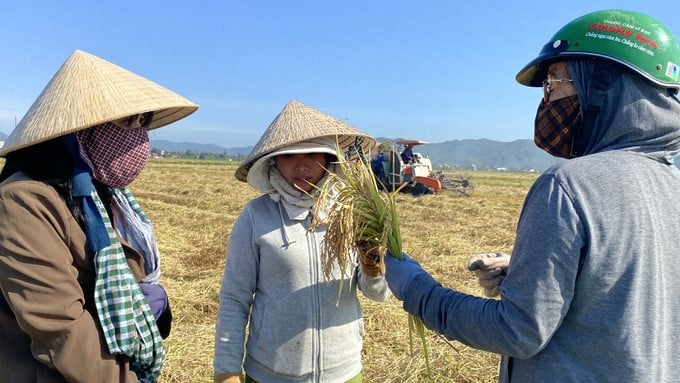
Phu Yen province is creating a breakthrough by attracting enterprises to invest in rice production. Photo: Kim So.
Trung An High-Tech Farming JSC has proposed a project on a linkage region of high-quality rice production, purchase, and export in Phu Yen province with a total investment of about VND 590 billion.
The project is expected to link raw material areas of about 15,000ha in key rice-producing districts and regions: Tay Hoa, Phu Hoa, Tuy An, Dong Hoa town, and Tuy Hoa city, in order to improve the quality and value chain of rice for domestic service and export processing. The project also aims to build strong rice brands for enterprises, provinces, and the country.
On May 8, 2023, the Party Civil Affairs Committee of Phu Yen Provincial People's Committee also submitted a report to the Standing Provincial Party Committee on the project investment guideline, which was approved for implementation. And, on June 20, the Phu Yen Provincial People's Committee issued Document 757 on approving the investment guideline and approving the investor as Trung An Hi-tech Farming JSC.
The Provincial People's Committee requires the investor to complete the investment procedures, complete the investment, and put the project into operation within 30 months from the date of the written approval of the project guideline, of which 18 months are for the construction investment. Therefore, we expect that this project, when deployed and put into operation, will blow a new wind into the rice production of Phu Yen province.
Thank you, sir!
Through the Vietnam Agriculture Newspaper, Mr. Nguyen Trong Tung called on enterprises to research and invest in projects approved by the Phu Yen Provincial People's Committee, such as building material areas and fruit processing and export fruit packaging factories in Song Hinh district, with an area of about 300ha; the project of a fruit and herbal processing plant in Son Hoa district, with an estimated scale of 5ha and a capacity of 5,000 tons of products/year. Or invest in building material areas according to the value chain of herbs and medicinal plants in the plains in order to promote the effective restructuring of crops on rice land.
Translated by Huyen Vu Thu
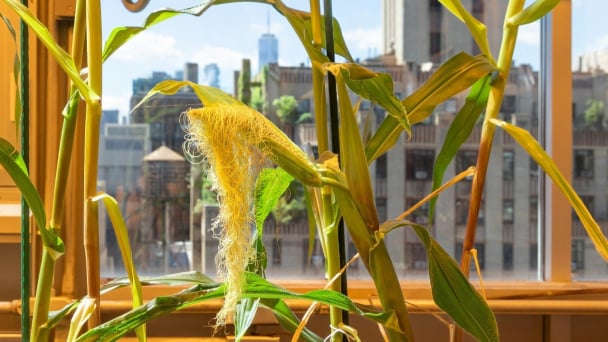
(VAN) Novel process harnesses machine learning to reveal groups of genes that determine how efficiently plants use nitrogen.
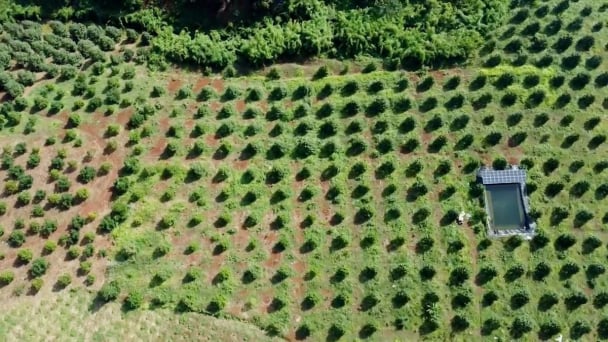
(VAN) Several scientists and farmers are experimenting with soil treatment in some key durian-growing regions such as Cai Lay (Tien Giang), Dak Song, Gia Nghia, and Dak R’lap (Dak Nong).
/2025/05/25/4127-3-073637_820.jpg)
(VAN) Thanks to the promotion from an FAO-implemented project, vegetable production in greenhouses in Moc Chau has seen strong development, from 1.5 hectares in 2021 to nearly 50 hectares in 2024.

(VAN) FAO has recently supported USD 140,000 to implement the project 'Risk mitigation human-animal interface risks through disease control initiatives in pig farming.'

(VAN) The People's Committee of Tra Vinh province has approved an adjustment to the investment policy for the Green Hydrogen Plant project, increasing its area to approximately 52.76 hectares.
![Reducing emissions from rice fields: [2] Farmers’ commitment to the soil](https://t.ex-cdn.com/nongnghiepmoitruong.vn/608w/files/news/2025/05/05/dsc08881jpg-nongnghiep-140632.jpg)
(VAN) Clean rice cultivation model in Thuong Tan commune, Bac Tan Uyen district, is assisting local residents in achieving sustainable agriculture by substantially reducing costs, increasing productivity, and protecting the environment.

(VAN) At the conference to disseminate Resolution No. 68, AgriS introduced its digital agricultural ecosystem and reaffirmed its commitment to accompanying the Government in promoting private sector development and sustainable agriculture.